Q&A: ‘One With the Whale’ co-director Pete Chelkowski on the collaborative creation, reception of the Alaska Native film
March 22, 2024 Leave a Comment
The new, award-winning Independent Lens film One With the Whale takes viewers to Gambell, a small Alaskan village on St. Lawrence Island in the middle of the Bering Strait. It’s cold, rugged and not even trees can grow there. For the local Native Yupik community, survival means hunting sea mammals.
After 16-year-old Chris Agra Apassingok harvests a whale, his community celebrates. But Chris, whose whale feeds the village for months, is soon bombarded with death threats and hatred from environmental activists and their followers.
At once a true coming-of-age tale and a call for Indigenous wisdom within the environmental movement, One With the Whale gives an intimate look at the Apassingok family as they hunt, grow and navigate through both hardship and triumph.
Ahead of One With the Whale’s PBS Wisconsin broadcast at 9 p.m. Tuesday, April 23, we spoke with one of the film’s co-directors, Pete Chelkowski, about the film and what he hopes viewers take away from it.
PBS Wisconsin: You filmed One With the Whale mostly on site in Gambell, Alaska. How did you find yourself there capturing this story?
Chelkowski: It was an interesting trajectory. My co-director Jim Wickens and I were on the Pacific Ocean working on a TV show, and we encountered the racism that’s entrenched in the environmental space. The TV network wanted us to spin the show with us — the white guys — as the good guys, and the Brown people as the aggressors. We couldn’t do it, and we wanted to find a story that could crack open this inherent racism that exists.
Months later, Jim saw this story on social media about Chris Agra Apassingok — the youngest kid in his village to ever harvest a whale — and the thousands of hate messages and death threats from Paul Watson, founder of Sea Shepherd Conservation Society, and his followers. This kid lives on an island with an extremely high rate of youth suicide. It was so shocking.
Jim asked me, “What do you think of this story?” I said, “This is exactly it.”
Jim reached out to Chris on social media, and he replied, “Sure. You can come. Just ask my mom.” You know, being 16, Chris was thinking Gambell is just around the corner for us. But in reality, it costs thousands of dollars to travel thousands of miles to get there. It’s one of the most remote places in the United States.
So, I called Chris’ mom, Susan Aakapak Apassingok, and she was super nice. After our conversation, she said Jim and I could come. And that was the beginning of our now five-year relationship.
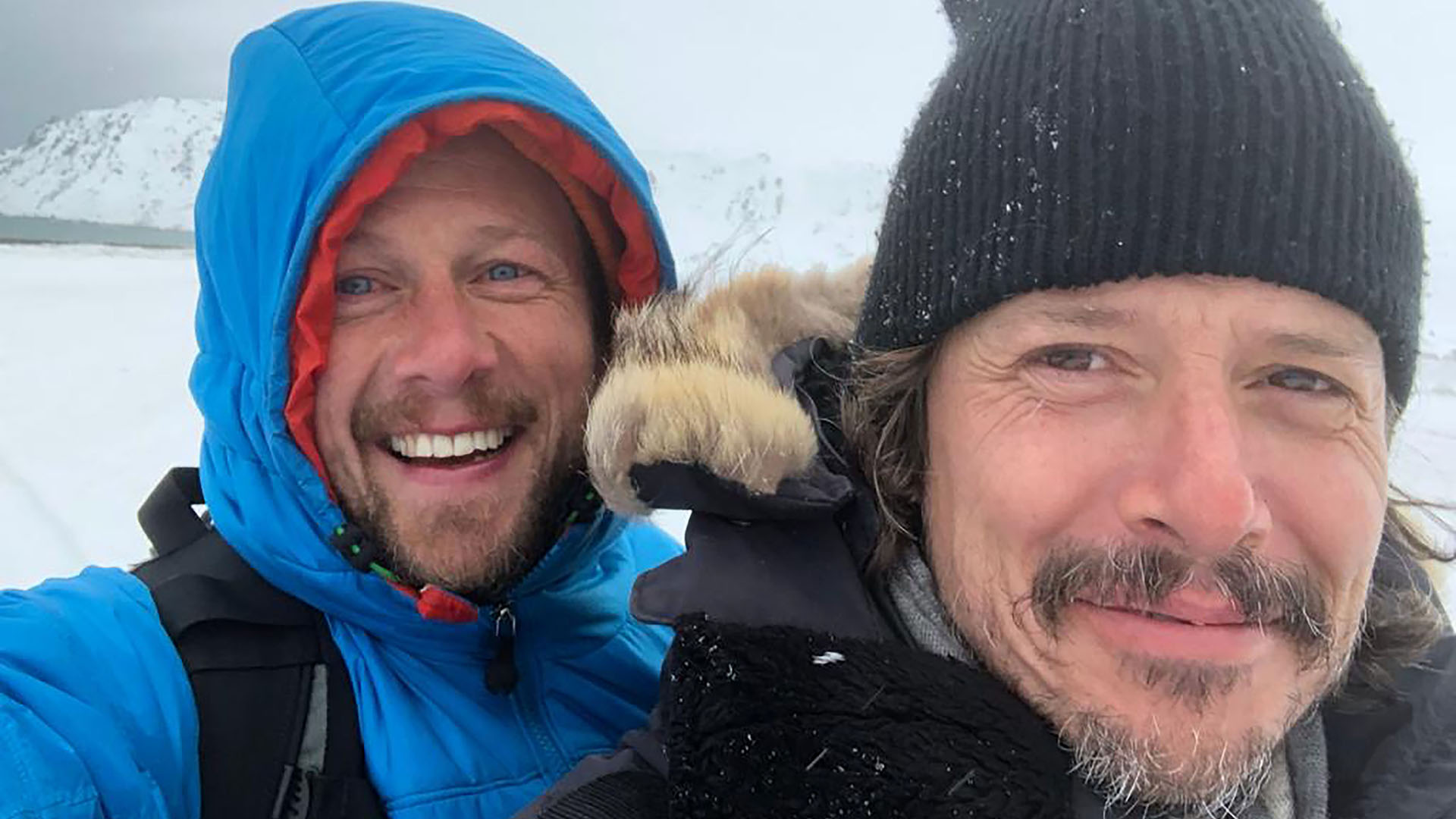
Jim Wickens and Pete Chelkowski.
PBS Wisconsin: The opening credits of the film list more than 20 names without any film roles or titles. You and your partner Jim Wickens are just two of those names. What does that mean to you?
Chelkowski: Those are all the people involved in the film creatively or on camera. Jim and I aren’t from Alaska. We’re not Alaskan Natives. We’re not Indigenous. But we knew this story was important. And we felt from the very beginning that we needed to tell their story with them, not just about them. Jim and I just happen to have camera equipment and the skill set to make movies. But in the end, it’s their story.
Overall, the film development was really beautiful. We started as two guys with the Apassingok family, then the Gambell community, then we worked with Alaska Natives on the mainland to add more context and perspective.
I felt like we succeeded in telling the community’s story when the Alaskan Federation of Natives — the largest annual gathering of Native peoples in the U.S. — opened their convention with the film. We had sent an almost-final cut of the film to the AFN, and a representative told me, “One With the Whale touched my heart and spoke to my soul. It’s an Alaskan Native story with a modern twist. I’d like to open the AFN with it in front of an audience of 2,500 people.”
That was it. I felt like I’d won an Oscar.
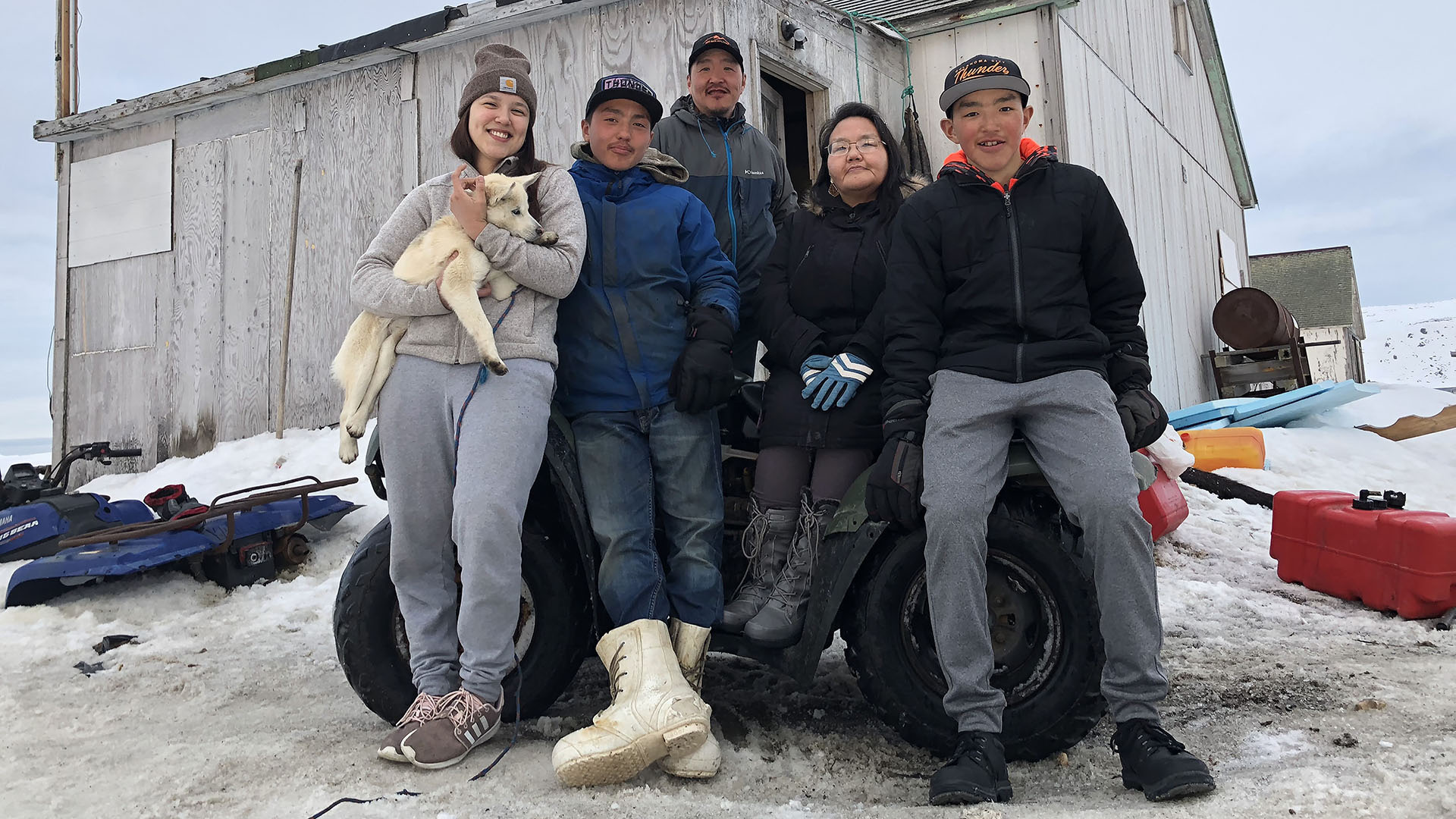
PBS Wisconsin: While watching the film, I felt so close to the Gambell community and the Apassingok family, especially Chris and his sister Nalu. Their personal experiences are important throughout the film. How did you go about sharing their stories in such a vulnerable way?
Chelkowski: I’d say kindness is the magic. People respond to kindness and honesty. There’s really no recipe; we have to just let people be themselves.
People have asked, “Did you direct all this stuff? How did you set it up?” And, you know, we tried not to set anything up. Of course, there was lots of planning and many conversations about what we were hoping to capture, but it was all about having authentic relationships right from the start.
It was particularly interesting with Nalu, because we didn’t know anything about her sexual identity at first. Then after she left Gambell, she started feeling comfortable and open to sharing. After moving to mainland Alaska, Nalu took on that confidence. In a way, she empowered herself by leaving. For an 18-year-old girl to leave home like that — that’s so badass. She decided to leave to find her life.
Chris isn’t as verbal, so that was a challenge. He’s our main character, and he’s more of a James Dean type. He’s silent and speaks through his actions. He feels safer going out in below-zero temps, cutting through sheets of ice, chasing a 50-foot whale on an 18-foot aluminum skiff with a harpoon he made in shop class. He feels safer doing that than going to school. At school, he felt fear. We needed to visually illustrate the strength of who he is and also his fears.
In the end, it’s all about being kind, being honest and being open about yourself.
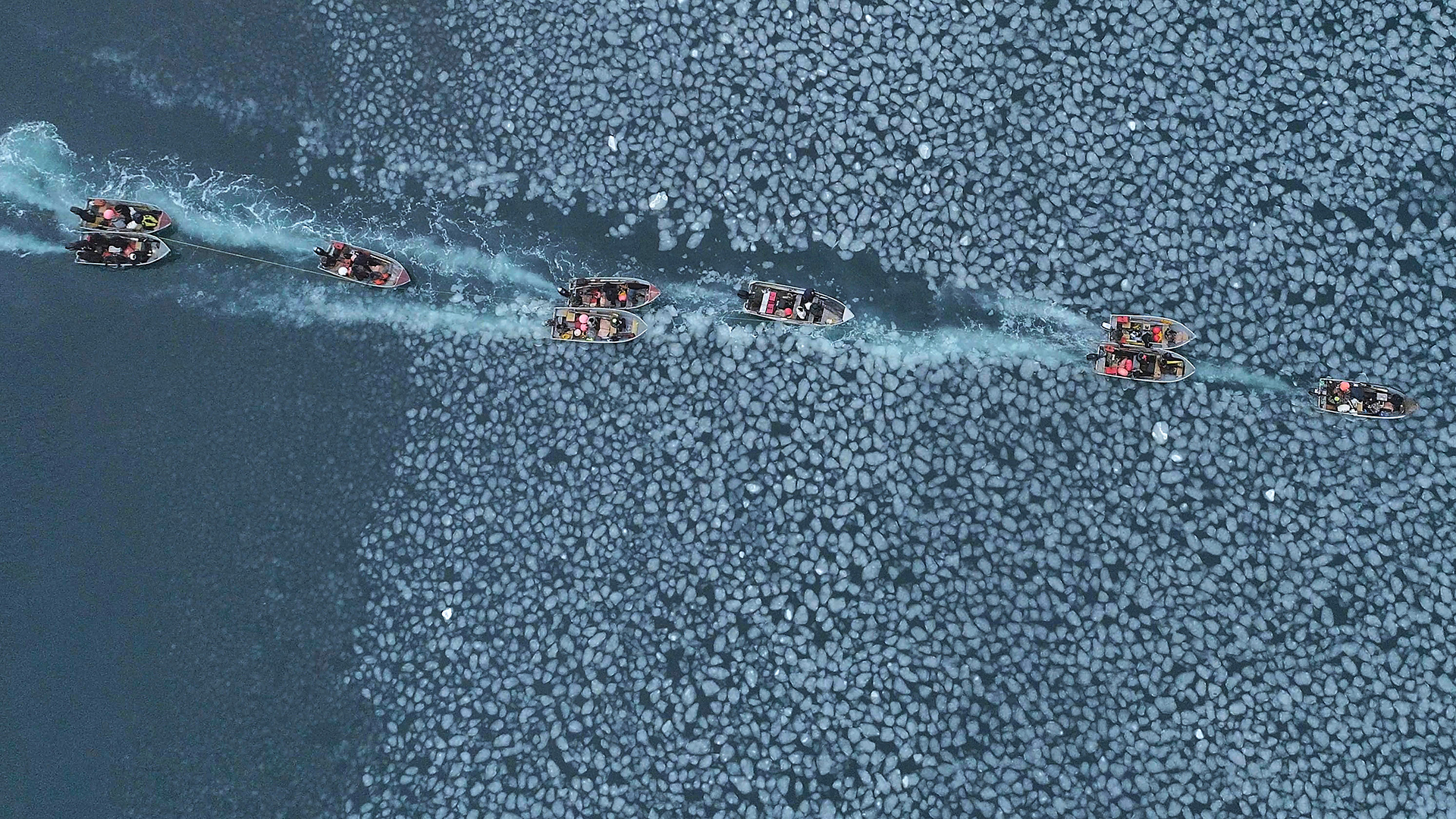
PBS Wisconsin: During some of the most thrilling parts of the film, the camera’s point of view is from a small boat — a lot like boats we use here to fish on Wisconsin lakes — rushing through icy Pacific waters. What was that like?
Chelkowski: Jim and I have worked out on the ocean a lot, and our families worry about us, so we bring a lot of survival suits and stuff like that. We went out from Gambell the first day with those survival suits. But then the next morning, the hunting crew came to our room and sat us down on the bed.
They said, “Guys. All this survival stuff? It has to go. If we get a walrus, we need a place to put the walrus. We can’t have all this stuff. If you come with us, you come as hunters. Either you come out with the bare minimum or you don’t come out at all.”
So, we didn’t tell our families, and we went out without the survival suits. It was minus 15 degrees with 30-mile-an-hour winds. That’s some dangerous stuff! It looks like Deadliest Catch, you know? But instead of those giant vessels, we’re in an 18-foot aluminum skiff. It’s a lake boat!
I even noticed water filling up inside the boat, but Takeva — the father — said, “Don’t worry about it until it gets up past my knee. That’s when you worry.” I got frostbite that day.
Then we ended up stopping to pour some coffee, and Takeva says, “Welcome to tomorrow.” I didn’t understand. “We just crossed the date line. We’re in Russian waters. It’s tomorrow.” It was like a science fiction movie: we went into the future to feed ourselves today.
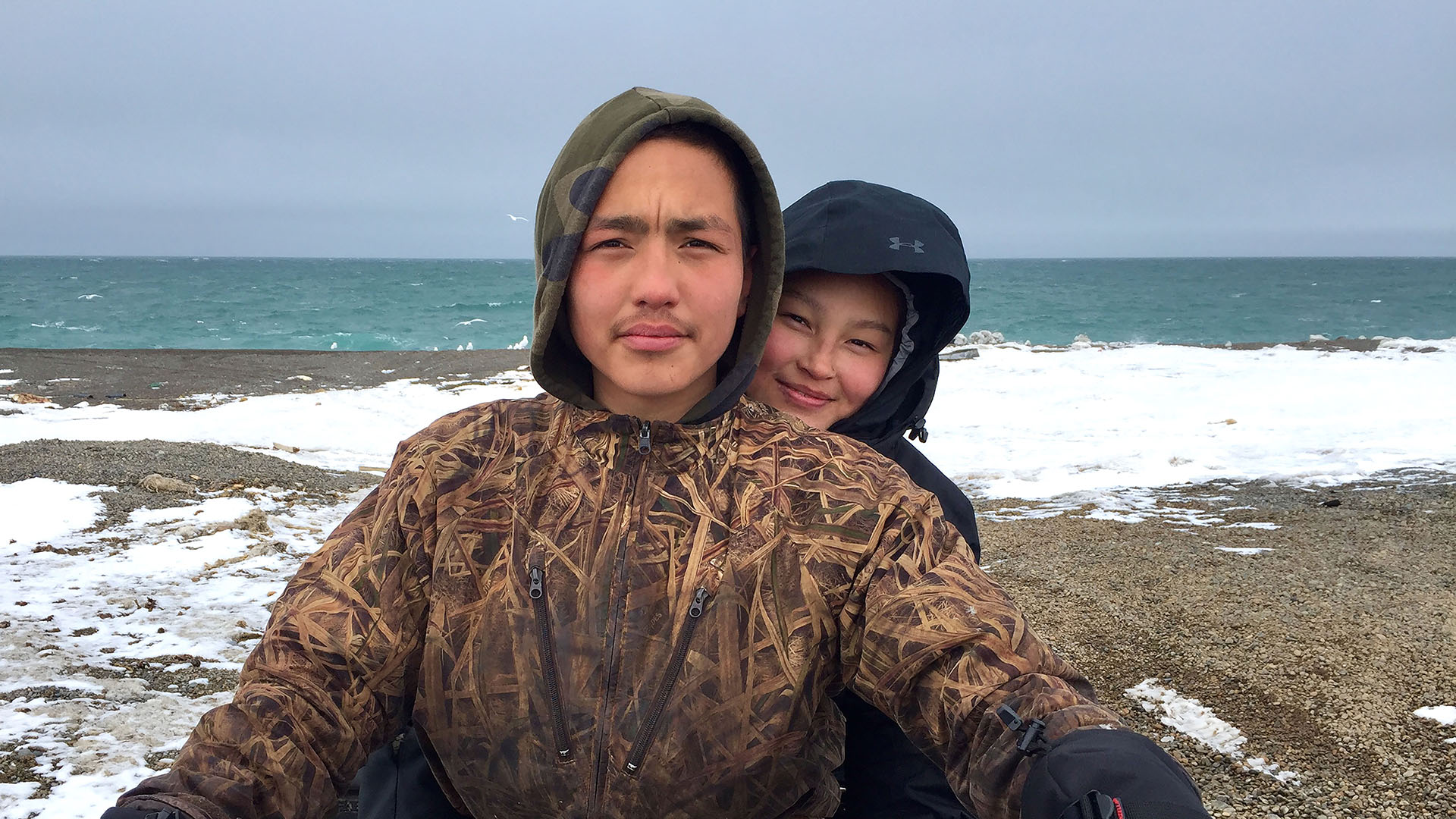
Chris and Ina
PBS Wisconsin: Who do you hope sees One With the Whale, and what do you want them to take away from it?
Chelkowski: When we first started making the film, Jim and I thought we were making a movie for the people in the lower 48 states. We wanted to open the eyes of people in the environmental movement. We wanted to show them the dangers of jumping to conclusions and neglecting to confront racism.
Then, after one of the Alaska Native producers watched the film, she said “I need to bring this film to all the Alaska Native villages and to the schools. This is our story, and it deals with all the different issues that teenagers face in Alaska. It touches on these topics, not by hammering or judging them, but by just showing Chris’ and Nalu’s own experiences. Then we can unpack it. We can show them how to confront these issues and mitigate them.”
We didn’t see that coming, but it’s really important. Then people in Alaska who aren’t Native told us they need to do the same thing — to help other kids understand Alaskan Native communities. And it can help adults all over Alaska learn about the complexity of life in a Native village.
Down here in the lower 48, a lot of it is about opening people’s eyes, but in a particular way.
People have wanted us to attack — to sort of militarize the film. But that’s not what we want. We want to bring people to the table. I think that’s the problem these days — people attack each other instead of talking about issues. We can definitely find commonalities among us all.
I remember showing One With the Whale in a progressive California community. One guy was like, “Oh my god, I’ve been supporting Sea Shepherd for like 20 years. I’m going to stop giving them any money.” But I was like, “No, that’s not what we’re saying.” We’re saying, Sea Shepherd’s great. The people who support Sea Shepherd have the right intention and vision. It’s just misguided. We need to open up the blinders so they realize what they’re targeting is incorrect. They need to incorporate Indigenous lifeways and Indigenous knowledge into their decision-making process.

PBS Wisconsin: Is there anything else you’d like to share about the film and your hopes for it?
Chelkowski: The Apassingoks are a family of hunters. Their community, I think they’re the most prolific hunters you’ll ever meet in the United States. If they don’t hunt, they die. They’re truly subsistence hunters. They need to provide food to survive.
I think lately the world is so polarized left and right. But in the end, hunters are often the largest funders of the environment…because they understand that to have abundant game and life, you need to have a beautiful, healthy environment.
[Hunting is] a cultural and family thing. I know in Wisconsin, some districts close schools during the gun deer hunting season, so families can hunt together. And when you hunt, you understand the process of giving and taking. If you’re going to take animals, you need to give back to that land and forest.
I would love this film to bring together these two groups of people who feel like they’re on different strata — hunters and environmentalists. They want the same thing, and in the end, it’ll make our environment much healthier.
 Passport
Passport




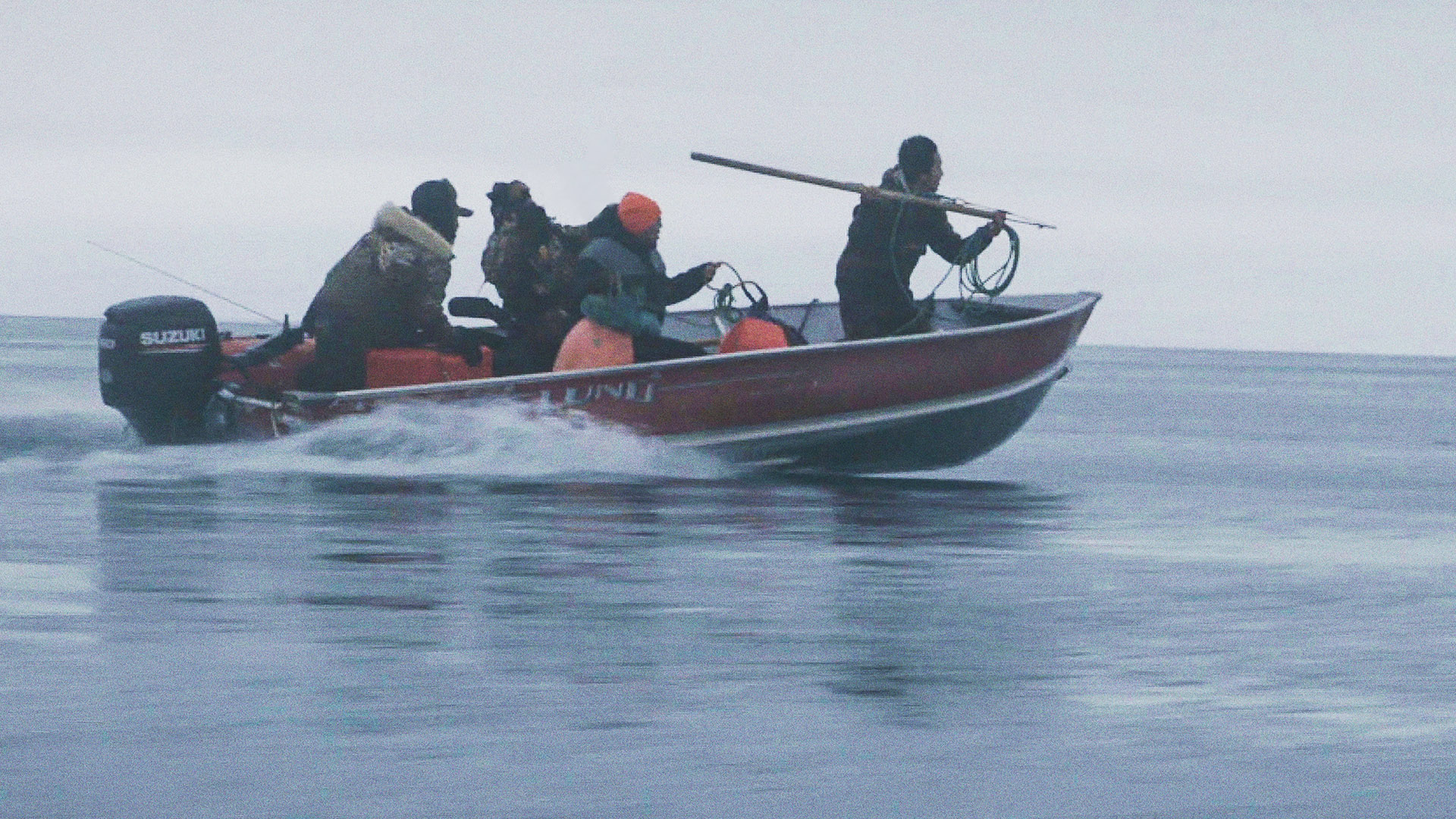

Fran S says:
This film was at the International Ocean Film Festival in San Francisco, CA (weekend of 11-13 April 2025.). Knocked my socks off with its honesty, genuousness, depth, and candor. Many thanks to the Apassingok family, the Gambell community, the above interview, and the film maker. Thank you.
Lynne Scott says:
I love this film!
I am a retired Special Ed teacher in Ohio. For years, I taught in a culturally and economically depressed area, in which attending school was not a priority. Hope did not abound. The future looked dull and predictable to the school population, with a few exceptions.
I could relate to Nala and her reasons for moving to the big city. My “kids” had no such escape… poverty runs in families, you know, it’s the family business in some cases.
I, too, had to be indulgent and look the other way during “huntin season,” as many of my students, with roots in Appalachia, would vanish for one school week each year. For some, it would be the only time a father would appear, so it was a time of bonding, too.
I noticed that Chris was lethargic when he was at school. As a teacher, that would have been a huge red flag for me. I understand that Chris was consumed with the Hunt, and for him, school was a waste of time. Thank God for his great parents! I also have to hand it to Chris for obeying his parents’ wishes.
So, was Chris lethargic because he was bored, OR, depressed by the bad publicity? Was he bored AND depressed? Or depressed because he was bored? ARGH!
He even lost interest in his girl friend.
I get it, I think. I understand why the men who filmed this included the Prophesy done over Chris at his CHRISTIAN church.
In the Prophesy, Chris was told that God considered him to be the greatest hunter in the WORLD! Only to have the world condemn him for doing just that, something that his ancestors have done from the beginning to survive. Chris became CONSUMED with perfecting his skill, reminiscent of Tiger Woods and his dad, And THEN: Chris became the youngest hunter to kill a whale! He provided food for his entire community! ACCLAIM!!! And then… the fall…. it almost sounds biblical!
Something worrisome caught my eye: Did I see Chris “hot knifing”? If so, is that legal in Gambel? Did doing that add to his lethargy? Was it cannabis oil (or bud) fumes that he inhaled from the blade he heated?
Did Chris turn to drugs to ease the suffering brought on by the relentless, thoughtless and cruel comments made by strangers- non Alaskans who do not understand food security, nor subsistence hunting of the bowhead whale? I think one of the social media commenters called it his “fake gods”. From what I could see, Chris is a Christian, and Christ is NOT a fake god.
For Chris and his community, killing that whale meant more than eating, it was a sign of “manhood” and it is spiritual: to be ONE with the WHALE. I’ve seen this attitude in indigenous people in the lower US; the same respect for the animals they killed for food. That’s how countless tribes survived for 20-30 millennia. They only killed what was needed to live.
It was the white man that decimated herds of animals for profit, and just for the sport of killing. And at the same time, veritably starving the settled, first Americans to death, causing survivors to move onto unfamiliar lands, land that was deemed unusable by the government.
So how were THEY supposed to live?
I didn’t see the social media comments that hurt Chris so badly, but I’m sure spoiled Americans of the lower ’48 ( I’m one) said the Chris and his family and his community were murderers and why didn’t they just get food from the grocery store? WITH WHAT MONEY? And did they SEE how much toilet paper cost there???? We (spoiled Americans of the lower ’48) would be rioting in the streets!
The ending of this wonderful film left me with a lot of questions, like that of “The Sopranos”! Was that the aim of the producers of this film?
Here is the next gen of Apassingoks, going off to SEA in an ALUMINUM LAKE BOAT!!
With a proudly sad dad in their wake.
What’s gonna happen to them?
What HAS happened to them?
Marth Vincent says:
I am overwhelmed by this film. I smiled , and laughed and cried. What resilience these people have. Such a hard life , it touched me in a way no film has. Thank you for telling this story. If I had children I’d want them to be Chris and Nala. Their parents are the best. I was as proud as Dad when the kids went out on their own.
Nancy Sundal says:
I have a ticket to see this film at the Film Festival, and am looking forward to it. Didn’t realize it was also coming to Independent Lens! But I’m glad so many will see it. Thanks for producing and showing an important film.